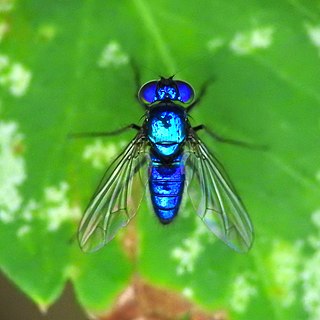
Polypores are a group of fungi that form large fruiting bodies with pores or tubes on the underside. They are a morphological group of basidiomycetes-like gilled mushrooms and hydnoid fungi, and not all polypores are closely related to each other. Polypores are also called bracket fungi or shelf fungi, and they characteristically produce woody, shelf- or bracket-shaped or occasionally circular fruiting bodies that are called conks. Over one thousand polypore species have been described to science, but a large part of the diversity is still unknown even in relatively well-studied temperate areas.

Fomitopsis pinicola, is a stem decay fungus common on softwood and hardwood trees. Its conk is known as the red-belted conk. The species is common throughout temperate Europe and Asia. It is a decay fungus that serves as a small-scale disturbance agent in coastal rainforest ecosystems. It influences stand structure and succession in temperate rainforests. It performs essential nutrient cycling functions in forests. As well as a key producer of brown rot residues that are stable soil components in coniferous forest ecosystems. It has been reported that mushrooms have significant antioxidant activity.

Fomitopsis is a genus of more than 40 species of bracket fungi in the family Fomitopsidaceae.
Dolichophorus is a genus of flies in the family Dolichopodidae. It includes eight species distributed in the Palaearctic and Afrotropical realms. The adults have a metallic green, green-black or blue-black body coloring, with some pruinescence.

Medetera is a large genus of flies in the family Dolichopodidae. It includes about 350 species worldwide. The adults are commonly found resting on vertical surfaces such as tree trunks, on which they have a characteristic vertical upright stance. Because of this stance, they are sometimes known as "woodpecker flies". Medetera adults are predators of soft-bodied arthropods, while the larvae are predators of bark beetle larvae.

Medeterinae is a subfamily of flies in the family Dolichopodidae.
Medetera bistriata is a species of longlegged fly in the family Dolichopodidae. It is widely distributed in North America, spanning from the pine forests of boreal Canada south to Honduras, and it is common in the pine forests of the Atlantic and Gulf costal plains. The larvae are predators of bark beetles in the genera Dendroctonus and Ips, and have been noted as important predators of the southern pine beetle, Dendroctonus frontalis.
Medetera arnaudi is a species of long-legged fly in the family Dolichopodidae. It is known from the Central Valley and Coast Ranges of California. It is named after the entomologist Paul H. Arnaud, Jr., who collected the type specimens.
Condylostylus tonsus is a species of long-legged fly in the family Dolichopodidae.

Condylostylus mundus is a species of long-legged fly in the family Dolichopodidae.
Dolichopus vigilans is a species of long-legged fly in the family Dolichopodidae.
Medetera aberrans is a species of long-legged fly in the family Dolichopodidae. It is distributed in Eastern North America. Adults of the species are generally colored a metallic green, with yellow legs. Not much is known about the biology of the species, but adults have frequently been collected from wet grasslands or marshes.
Chrysotus tennesseensis is a species of long-legged fly in the family Dolichopodidae.
Sciapus tener is a species of long-legged fly in the family Dolichopodidae.
Condylostylus viridicoxa is a species of long-legged fly in the family Dolichopodidae.
Condylostylus inornatus is a species of long-legged fly in the family Dolichopodidae.
Chrysotus bellus is a species of long-legged fly in the family Dolichopodidae.

Condylostylus caudatus is a species of long-legged fly in the family Dolichopodidae.
Gymnopternus opacus is a species of long-legged fly in the family Dolichopodidae.
Dolichopus sincerus is a species of long-legged fly in the family Dolichopodidae.






